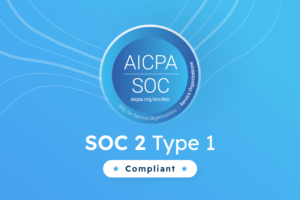Effective communication in healthcare facilities can be a challenge. It’s made difficult because of the added pressure of regulatory compliance and ongoing interoperability issues between legacy recordkeeping systems and new digital processes.
Of course, patient wellbeing often hinges on effective communication. According to a recent study, 52% of healthcare organizations face communication failures that negatively affect their patients. At the same time, in 2021 a staggering 70% of healthcare providers were still exchanging medical information by fax, according to Bloomberg. So, there’s plenty of room for improvement in communication avenues within healthcare facilities.
Although going digital can help remove the burden of cumbersome paperwork, even with digital systems it’s still important for healthcare organizations to focus on maintaining effective communication among staff members and teams. A good place to start is by highlighting how good communication can encourage collaboration, improve patient care, and contribute to employee satisfaction.
What are the best practices that your healthcare organization should be championing to support effective communication?
Communication technology
As we’ve already mentioned, the healthcare industry is notoriously reliant on out-of-date communication methods. Luckily, there is a wealth of HIPAA-compliant technology now available that healthcare organizations can use to enhance communication avenues.
It can be as simple as a live chat channel for teams that allows rapid access to co-workers from work computers and smartphones. For example, Slack for Enterprise can be configured to support HIPAA-compliant messages and documents.
Another key piece of technology is APIs, which stands for Application Programming Interfaces. APIs are software intermediaries that allow applications and databases to communicate with each other efficiently. APIs allow healthcare professionals to bring together data from different places, ensuring interoperability between platforms. This connectivity is vital to improving communication.
As a result, clinicians can securely transfer data between facilities and share data with colleagues to improve workflows and patient outcomes. This improved communication means that physicians can easily refer patients to different departments, without having to call several colleagues and make appointments.
There are now several cloud-based tools available for the healthcare industry that allow for secure communication within and among teams. For example, E-prescribing can bridge communication between physicians and pharmacists by eliminating the need for paper prescriptions delivered by the patient. What’s more, secure patient portals can give patients direct access to their data and allow physicians in several locations to also log in and view the relevant data. It allows patient data to be shared accurately, error-free and understandable.
Policy management tools
Policy management tools allow healthcare institutions to organize, edit, and circulate policy and procedure documents. An effective policy management tool can help healthcare organizations effectively implement updates. This type of software platform is typically cloud-based and allows healthcare leaders to clearly communicate policy updates and federal notifications, organize training, and facilitate easy collaboration across the entire team.
Policy management software allows healthcare professionals a content repository that anyone in the organization can access without having to rely on a number of policy manuals in each office. What’s more, policy management tools can deliver notifications to the relevant healthcare professionals, without relying on emails that can easily be missed, and track which staff members have signed and agreed to policy updates.
Communication and compliance
There is a clear connection between maintaining good communication and ensuring regulatory compliance. And, of course, the implicit goal of compliance is to maintain a high standard of care for patients.
The right communication technology and systems allow you to spread awareness about the importance of compliance, encourage open conversations among your team, and help staff members stay on top of regulatory expectations. Effective communication avenues also allow your staff to be more open with senior management and raise any concerns about non-compliance taking place. What’s more, good communication through secure and encrypted avenues is what’s necessary to remain compliant in the first place.
Straightforward reporting of non-compliance is a big step. You need to provide staff with a way to report non-compliance with confidence through methods like an anonymous drop box. Emphasize that any reporting will be taken seriously, respected, and valued. Always maintain the anonymity of your team members involved in the reported issue as well as the person reporting the concern.
The bottom line
The healthcare industry is constantly evolving thanks to the emergence of new technology that makes internal processes more streamlined. However, regulation and compliance means that communication between teams is not always straightforward.
That’s why communication, and policies that make communication easy while adhering to compliance, should be at the center of any healthcare agenda for this year. That’s why communication, and management of policies to ensure compliance, should be at the center of any healthcare agenda.
When you have created a workspace with a strong communication ethos the next step is to ensure that compliance becomes more efficient and simplified for your team. Surglogs’ products were designed to be used in a variety of healthcare workplaces, from ASCs to laboratories and long-term living facilities. Take a look at the rest of our website, and discover how Surglogs can help ensure your workplace meets compliance standards effectively and with ease.


